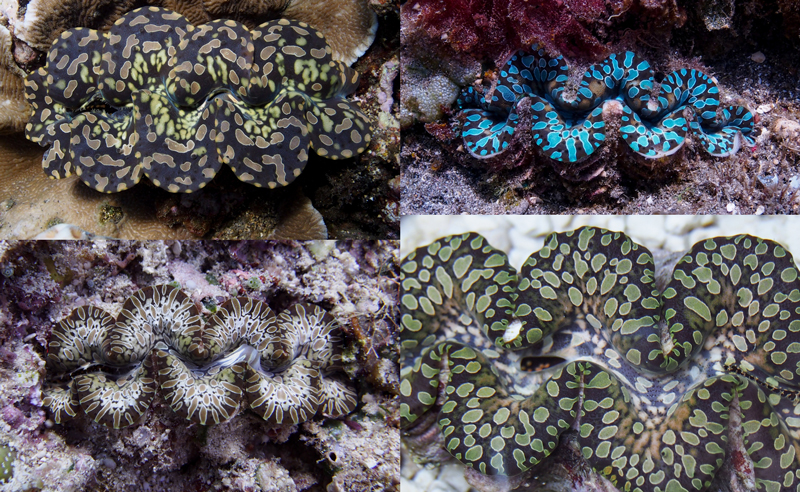Ever since the teardrop clam became officially described as a distinct species, we’ve really made an effort to notice and document Tridacna noae whenever possible. Thankfully, in just one year we’ve witnessed this unique bivalve all over the world.
In just 12 months we’ve come face to face with teardrop clams on natural reefs in Solomon Islands, Philippines, Indonesia, many specimens at each place. The diversity within teardrop clams is also pretty impressive; in the Philippines teardrops have a white-base, the teardrop shape is very numerous and crowded in specimens from the Solomon Islands and Australia, and Bali Indonesia’s version has fewer and much larger teardrops.
To think that until just a few years ago Tridacna noae was mostly overshadowed and lumped in with the ubiquitous maxima clam. But now that we see it for what it is, every single teardrop clam we come across is cause for much closer inspection and recognition. We’ll be keeping our giant clam radar on high alert from here on out, really appreciating the many variations of each species that come along, and you should too.












